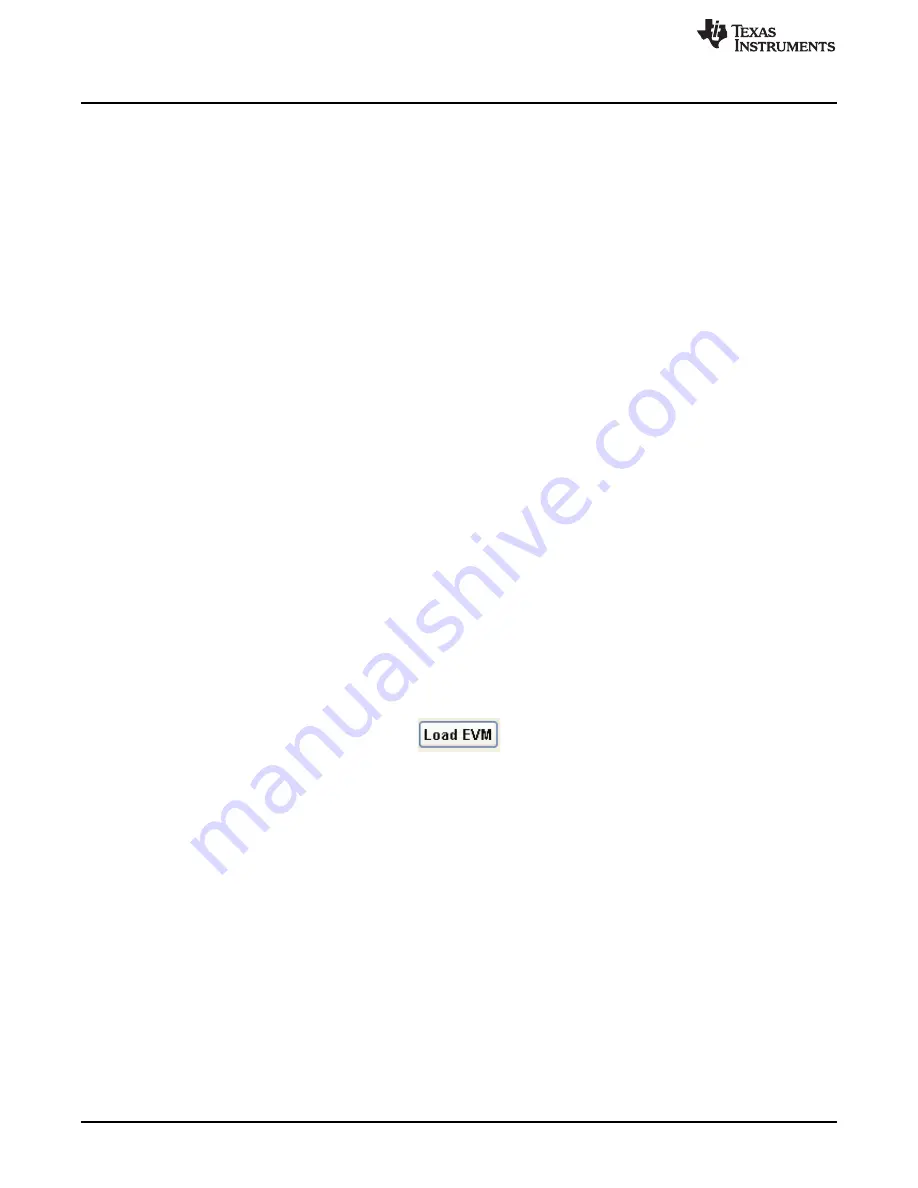
Using the Software
•
Window Beta (default = 3): The Autocfr_gui uses a window function for generating the CFR filter, and
the amount of windowing is controlled by Window Beta. Increasing the Window Beta broadens the
frequency of the in-band spectrum and lowers the floor of the out-of-band spectrum. Decreasing the
Window Beta narrows the frequency of the in-band spectrum and raises the floor of the out-of-band
spectrum.
•
Narrow (default = 0.2): Increasing the Narrow value slightly narrows the in-band spectrum. This can be
used to compensate for the broadening of the in-band spectrum due to increasing Window Beta.
•
Shift (default = 0): The shift value shifts the in-band spectrum slightly to the left or right. Sometimes the
CFR spectrum is slightly off from the input signal spectrum.
The four other controls for the Autocfr_gui are:
•
Truncation Level (default = 10 dB): The truncation level defines the level from maximum spectral
amplitude that is considered in-band. For example, if the input signal consists of three carriers with
relative amplitudes of 0,
–
5 dB, and
–
15 dB, only the 0 and
–
5 dB carriers are considered in-band.
•
Display EVM (default = 1%): This value only affects the relative amplitude of the CFR filter spectrum
relative to the signal spectrum. This value must be set to the approximate in-band EVM target for CFR,
and then adjusts the CFR filter spectrum relative to the signal spectrum in the display until the in-band
amplitude difference is this value. Doing this allows examination of the out-of-band CFR noise relative
to the spectral mask requirement. This does not affect any setting in the GC5325 or change the CFR
filter
–
it only affects how the two curves are displayed on the graph.
•
Fast Design: If checked, this speeds up the generation of the CFR filter by only using a section of the
input signal. If unchecked, the entire input signal spectrum is used. It is recommended to first get the
basic CFR filter spectral shape as desired, then uncheck Fast Design and regenerate. This removes
some of the noise in the CFR filter spectrum.
•
Save: If checked, this allows saving a two-column text file with the filter taps when the generate button
is clicked.
•
Generate: After adjusting the CFR filter parameters, click on the Generate button to store the filter in
memory for loading to the GC5325.
4.1.2
Step 2: Loading of the GC5325EVM
The user must load both Channel 0 and Channel 1 configurations before attempting any testing of the
system. To load Channel 0 of the EVM, including the DSP run time code, FPGA registers, the RF
portion (DAC5682Zs, CDCM7005, attenuators, RF switches), GC5325 configuration, and TSW3100
Pattern Generator, click on the Load EVM button:
This results in a significant amount of information to be displayed in the programs DOS window. This
takes approximately 60 seconds. When it is finished, the DAC5682Z "DLL locked" indicator is green on
the GUI, indicating the DAC5682Z is locked to the GC5325. The Cal Feedback button in the DPD
Control section is now enabled. The status message window in the bottom of the GUI now displays
"EVM downloading is done."
Several indications on the GC5325EVM hardware show that the loading was successful. Near the DSP
are four status LEDs, (
) which provide the following status:
1. The LED labeled DSP_CONFIG blinks, indicating that the DSP loading was successful.
2. The LED labeled GC_CONFIG illuminates, indicating that Channel 0 GC5325 device has been
configured properly.
3. The LED labeled GC0_FAIL illuminates if Channel 0 GC5325 device did not configure properly.
4. The LED labeled GC1_FAIL illuminates if Channel 1 GC5325 device did not configure properly (check
after Channel 1 is loaded ).
14
GC5325 System Evaluation Kit
SLWU063F
–
April 2009
–
Revised April 2011
Copyright
©
2009
–
2011, Texas Instruments Incorporated





























